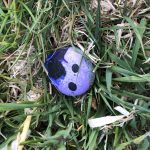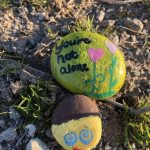Hello Divisions 36, 38 and 39.
I hope you enjoyed the sunshine with your families this past weekend and maybe a visit from the Easter Bunny.
Here are this week’s activities for you to explore. Some of the activities can be revisited from week to week. You can also visit some newly added sites under the Useful Links tab for more learning opportunities.
Remember to email your individual teacher once a week, or more if you wish, some pictures of your learning. We would love to see your Thank You posters or maybe a picture of your Rock Monster. Email us anything you may have created or a picture of you engaged in any learning activity.
- Please read a book with an adult or sibling each day. This can include a bedtime story. Try to read a physical book, if possible, to limit screen time.
- Make a poster or sign to share words of encouragement or a positive message to our community. You can thank the essential service workers (grocery store workers, healthcare professionals, mail carriers, etc.) to lift our spirits. Don’t forget to write your name and message in big letters so that neighbours can see what you wrote. You can also draw pictures to decorate the sign. Place your sign on your window or door in your house. Please send your teacher a picture of what you did through email.
-

Click here for a larger Rock Monster image  Click this link to read the Rock Monster story with an adult or sibling. Think about all the things you and your family are doing to keep everyone safe. Then draw a picture of how you are helping. You can make your own Rock Monster by collecting a rock from outside your house. Use paint or coloured markers to decorate it. Next place your new friend somewhere in your neighbourhood for others to see.
Click this link to read the Rock Monster story with an adult or sibling. Think about all the things you and your family are doing to keep everyone safe. Then draw a picture of how you are helping. You can make your own Rock Monster by collecting a rock from outside your house. Use paint or coloured markers to decorate it. Next place your new friend somewhere in your neighbourhood for others to see. - Try to grow a bean seedling in a clear plastic container or glass jar. You can watch it grow and develop over the next few weeks. Remember to place it in a window. It will need sunlight and to be watered each day. Please draw pictures of the changes you notice as the bean grows and develops to record your thinking.
- Work on your measurement and counting skills by making play dough with an adult’s help. Click this link for a simple play dough recipe. You can help measure and count the ingredients. Once your play dough is made it can be stored in an air tight container or plastic bag. You can use your play dough over and over for the next few weeks.
Play Dough Explorations
-
- See how many shapes you can make by forming the play dough. For example, circle, square, triangle, rectangle, octagon, etc.
- See how many solids you can form. For example, cone, sphere, cube, cylinder.
- Form the letters of the alphabet.
- Form the letters of your name or familiar words.
- Explore your play dough using familiar household items such as, cookie cutters, buttons, plastic utensils, rolling pin, bottle, small toy animals, straws or tea strainer.
- Measure the width of your living room using various nonstandard units such as your shoe, the length of a spoon, hand spans, chopsticks, straws. Don’t forget to use a baseline and make sure your units are touching when you measure. What do you notice? Try to measure another room in your house.
- Go for a walk with your family and look for signs of spring in nature. Draw a picture of what you discovered.
- Practice forming the letters of the alphabet every day.
- Practice alphabet sounds daily.
- Put together a counting collection using familiar house hold objects such as bottle caps, bread tags, buttons, small toy animals, marbles, paper clips, etc. A range of approximately 30-50 objects per collection is a good number. Explore how many ways you can count your collection. Try dividing your collection by 2’s, 3’s, 4’s, 5’s, 10’s, etc. This activity can be revisited many times during the week.
- Check out the Useful Links tab to explore more learning opportunities.
Warmest regards,
Mrs. Lee, Ms. Maratovic and Mrs. Nero